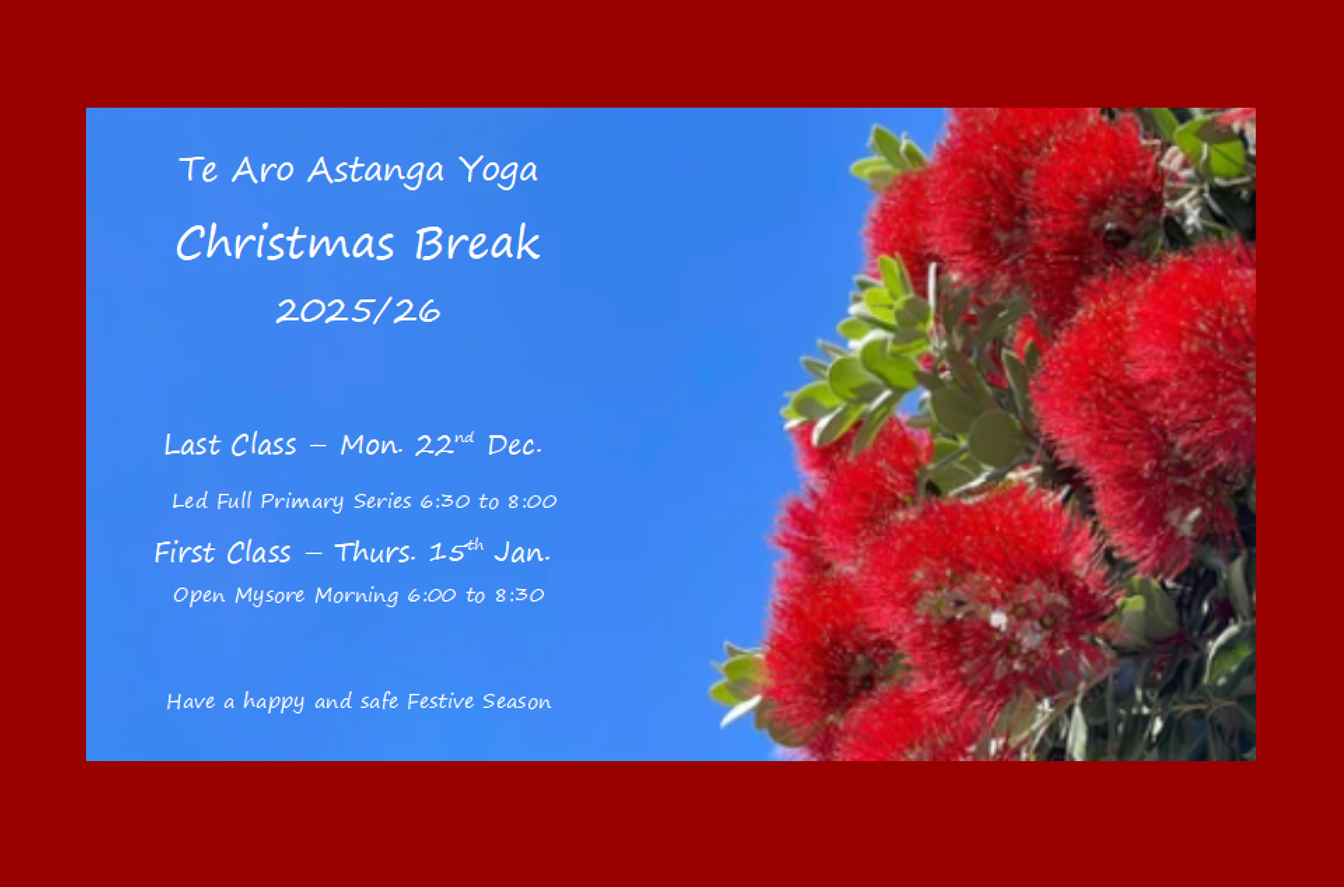Dogma and Ashtanga Vinyasa Yoga
TAAY Summer Break 2025/26
As 2025 draws to a close I’d like to thank everyone who has supported Te Aro Astanga Yoga this year. I recognise how difficult the year has been financially for many of you and appreciate that you have made the commitment to continue to practice Ashtanga Yoga with us. Te Aro Astanga Yoga is surviving thanks to you! I hope to see you all for a fantastic 2026.
Last Class 2025: Monday 22nd Dec. — Led Full Primary Series 6:30 to 8:00 am.
First Class 2026: Thurs. 15th Jan. — Open Mysore Morning Class 6:00 to 8:30 am
I hope that you and your whānau have a safe and happy Festive Season.

Namaste Mike. I agree with you – like many things in life, it is useful to understand the rules, so that when you break them, you do so knowingly. This is what produces great literature. Likewise, a great Ashtanga teacher understands the asana system in great detail, but likewise is able to adjust it to the needs of the student (sometimes themself!).
However, a danger with the Ashtanga style I observe, is because we are so focussed on the breath (it is a moving meditation after all), teachers often do not put enough emphasis on the body. I find many students who come to me after years of ashtanga in other places, are habitually locking their knees and locking their shoulders over their ears. It’s really tough on their bodies! And it can take a lot of gentle persuasion on my part that they need to make changes to their practice for the sake of their health. I know from my own experience how hard it is to accept a correction is needed, and then change to habit. (Thank goodness I’ve had some AWESOME teachers.)
🙂
Hi Kim. Thanks for the comment. For me, it is not about breaking the rules but more applying them with the right mix of rigor and lightness and with a good dose of compassion. This mix will be different for every student. I am lucky enough to be in a situation where I work with people over a long period of time and my intention is always that they should come to understand the beauty of the Ashtanaga Vinyasa method and that it has been around for a long time and was developed by people with a much deeper insight into yoga than we will ever have. For some people I may take a round about route, but in the end I want them to realise that if you follow the method, it works. cheers, Mike.
Excellent article Mike, and a good reminder of where Astanga stems from. Thanks.